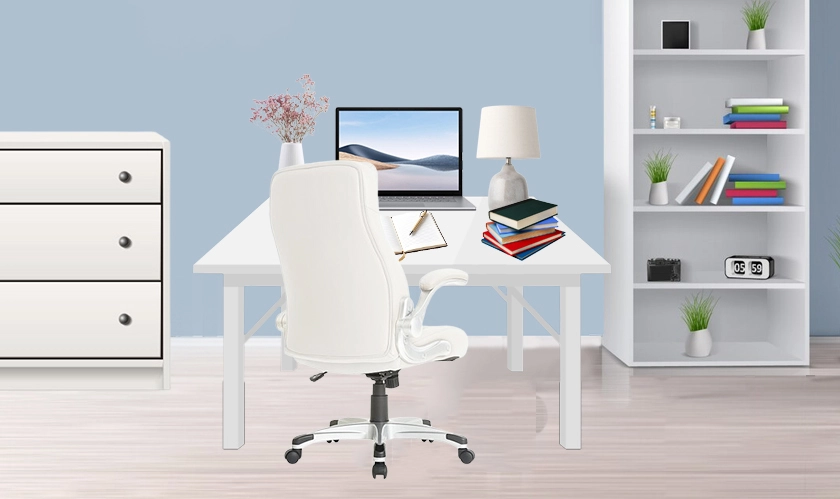Home Industry Architecture and interior design How to make a study room...
Architecture And Interior Design

CIO Bulletin
02 May, 2024
In today's rapidly evolving educational and professional landscapes, success hinges not only on hard work and dedication but also on the environment in which we work and study. Whether you're a student striving for academic excellence, a remote worker aiming to maximize productivity, or an individual committed to lifelong learning and personal growth, the space in which you study can significantly impact your outcomes. To unlock your full potential and achieve peak performance, creating a study room tailored to your specific needs and preferences is essential.
The foundation of a successful study room begins with choosing the right location. We'll delve into the importance of seeking out a quiet area within your home, away from distractions, and prioritizing natural lighting to enhance mood and productivity. Next, we'll discuss the significance of ergonomic furniture in promoting proper posture and physical well-being during extended study sessions, ensuring comfort and support for optimal performance.
Personalization is key to cultivating a study space that inspires and motivates. We'll explore how infusing your workspace with personal touches and decor that reflect your identity and aspirations can foster a sense of ownership and commitment to your studies. Additionally, effective organization solutions and noise reduction techniques will be discussed to minimize distractions and promote mental clarity, enabling uninterrupted focus on your academic or professional endeavors.
By prioritizing these essential elements and tailoring your study space to your unique needs, you can create an environment that empowers you to achieve your academic and professional goals. Investing time and effort into designing the ultimate study room is an investment in your success, transforming your study space into a sanctuary for learning, growth, and success.
Selecting the optimal location for your study room sets the foundation for a conducive learning environment. Seek out a quiet area within your home, away from bustling activity and potential distractions. Natural lighting plays a vital role in enhancing mood and productivity, so prioritize rooms with ample sunlight exposure. Avoid spaces adjacent to noisy appliances or high-traffic zones, as tranquility is essential for focused study sessions.
Ergonomic furniture is a cornerstone of a well-designed study room, promoting proper posture and physical well-being during extended study sessions. Prioritize ergonomic chairs with adjustable features, such as height and lumbar support, to mitigate discomfort and prevent strain. Pair your chair with a spacious desk that offers ample surface area for study materials and incorporates storage solutions for organization. Consider standing desks for versatility, comfortable seating, and improved circulation, ensuring a comfortable and dynamic study experience.

Lighting plays a crucial role in creating an inviting and conducive study environment. Maximize natural lighting by positioning your desk near windows to harness daylight's mood-boosting effects and minimize eye strain. Supplement natural light with task lighting options, such as adjustable desk lamps, to provide targeted illumination during evening study sessions. Balanced lighting enhances concentration and alertness, facilitating a productive study atmosphere.
Infuse your study room with personal touches and decor that resonate with your individuality and aspirations. Personalization fosters a sense of ownership and inspiration, motivating you to engage actively with your studies. Adorn your workspace with motivational decor, such as inspirational quotes or artwork, to cultivate a positive mindset and maintain motivation. Display cherished mementos and photographs that evoke positive emotions and reinforce your sense of purpose.
Maintaining a clutter-free environment is essential for minimizing distractions and optimizing focus. Implement organization solutions such as shelves, bookcases, and storage bins to keep study materials orderly and easily accessible. Label containers and designate specific areas for different types of resources to streamline retrieval and reduce study interruptions. A well-organized study room promotes efficiency and mental clarity, facilitating uninterrupted learning sessions.
Embrace technology as a facilitator of learning and collaboration within your study room. Invest in high-quality devices such as computers or laptops with fast internet connectivity to access online resources and participate in virtual learning environments. Create a dedicated tech hub equipped with charging stations and ergonomic accessories to optimize device usage and comfort. Leverage tech integration to enhance research capabilities, streamline workflows, and stay connected with peers and instructors.
Conclusion
Crafting the ultimate study room requires a thoughtful approach that integrates essential elements such as ergonomic furniture, natural lighting, personalization, organization solutions, noise reduction techniques, tech integration, clutter-free environments, task lighting, comfortable seating, and motivational decor. By prioritizing these components and tailoring your study space to your preferences and needs, you can create an environment conducive to concentration, comfort, and productivity. Invest time and effort into designing a study room that inspires and empowers you to achieve your academic and professional goals. With the right environment and mindset, your study room can become a sanctuary for learning, growth, and success.
By carefully selecting the location of our study space, we establish the foundation for success, prioritizing tranquility and natural light to foster concentration and mood enhancement. Investing in ergonomic furniture ensures that our physical well-being is supported during extended study sessions, promoting comfort and productivity. Moreover, by personalizing our workspace with motivational decor and cherished mementos, we cultivate a sense of ownership and inspiration that fuels our commitment to learning.
Effective organization solutions play a crucial role in minimizing distractions and promoting mental clarity, enabling uninterrupted focus on our studies. Seamless integration of technology further enhances our learning experience, providing access to a vast array of resources and opportunities for collaboration. Embracing technology not only streamlines our workflows but also fosters connectivity with peers and instructors, enriching our educational journey.
The creation of a tailored study room is a multifaceted endeavor that requires careful consideration of essential elements such as ergonomic design, lighting, personalization, organization, and technology integration. By prioritizing these components and designing a space that reflects our needs and aspirations, we set ourselves up for success in the pursuit of academic and professional excellence. With dedication and thoughtful planning, our study room becomes not just a physical space but a sanctuary for learning, growth, and achievement.
FAQs:
1. How can ergonomic furniture contribute to a more productive study environment?
Ergonomic furniture not only enhances physical comfort but also reduces the risk of musculoskeletal issues, such as back pain or repetitive strain injuries. By providing proper support and adjustability, ergonomic chairs and desks enable users to maintain optimal posture, fostering sustained concentration and productivity throughout extended study sessions.
2. What are some strategies for maximizing natural lighting in a study room?
Positioning your study desk near windows allows for ample exposure to natural light, which has been shown to positively impact mood and cognitive function. Additionally, incorporating adjustable task lighting ensures consistent illumination during evening study sessions, helping to maintain alertness and productivity while minimizing eye strain.
3. How can personalization enhance the atmosphere of a study space?
Personalization adds a sense of ownership and inspiration to a study space, fostering a positive atmosphere that motivates active engagement with studies through decor and mementos reflecting individual interests and aspirations.
4. What organizational solutions can help keep a study room clutter-free?
Implementing shelves, bookcases, and storage bins, along with labeling containers and designating specific areas for different resources, can help maintain organization and minimize clutter in a study room.
5. What are effective methods for reducing noise distractions in a study area?
Using noise-canceling headphones, soundproofing walls, or selecting a quiet location within the home away from noisy appliances and high-traffic areas are effective methods for reducing noise distractions in a study area.







